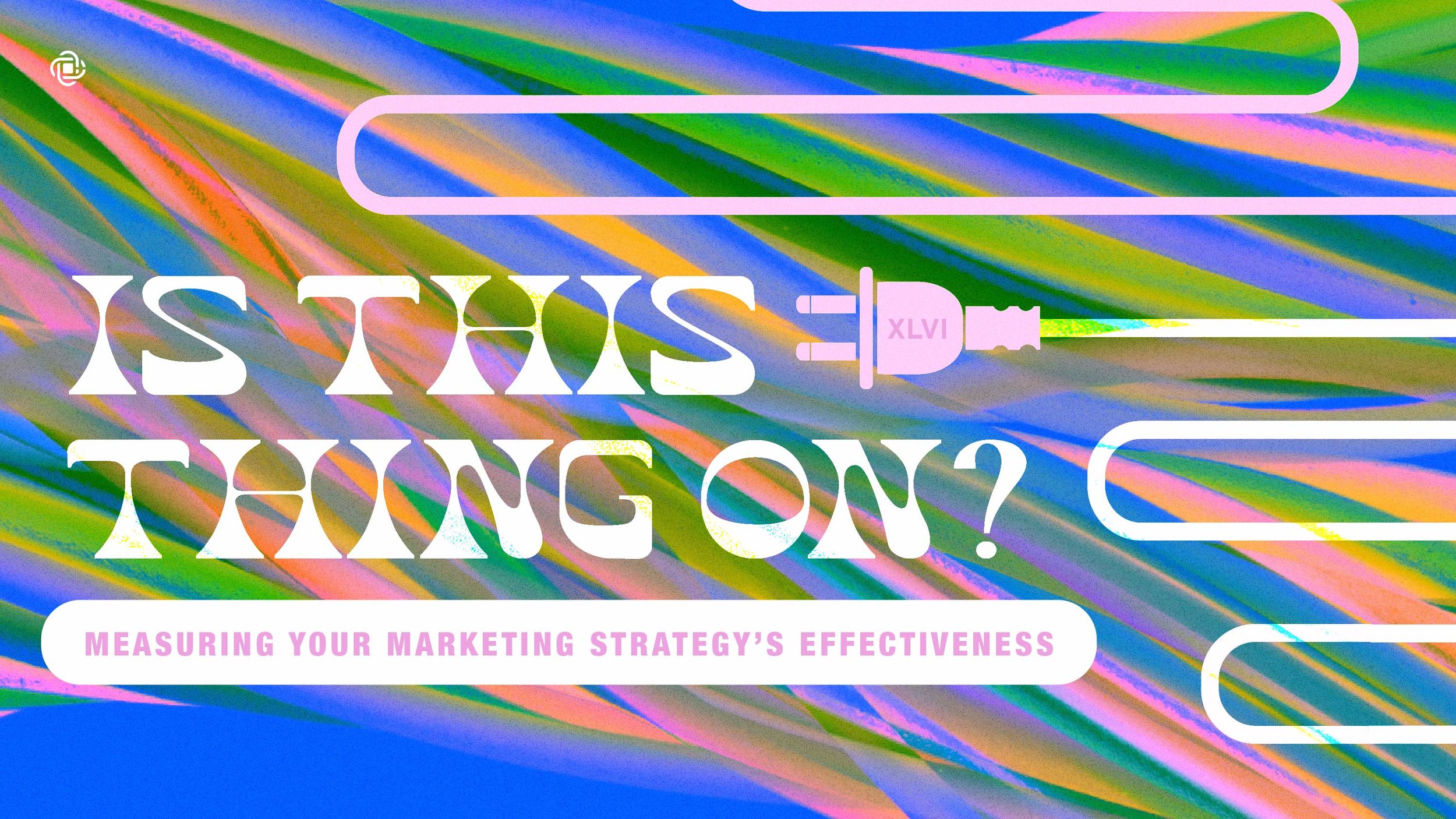If you’ve ever baked a pie, mixed a cocktail, cut a piece of lumber, or carefully doled out children’s fever medication at two in the morning, then you know the importance of being able to measure accurately.
Yet when it comes to brands and they’re marketing strategies, dependable metrics are often hard to come by. How should we marketing measure success? Is it number of leads generated or maybe subscribers to the newsletter? Revenue month to month? Followers on Instagram? ROI? Ad spend vs customer lifetime value?
It’s a lot to keep an eye on. And many don’t. They choose a single metric or measurable, put it on a pedestal, and point the whole brand at it. As a result, the real measures of success often get left behind.
This outcome is never more apparent than when CEOs and marketers choose to adopt a LeadGen strategy. Now we’ve spent lots of words and energy in the past talking through the pitfalls of LeadGen. So we won’t rehash all of it here.
But the thing that downright sucks about LeadGen, is that it hamstrings great brands by focusing their attention on a metric (leads generated) that’s a superficial marker of success. And worst yet, its growth doesn’t ultimately produce real demand. Quite the opposite.
When it comes to knowing if marketing is working, how we measure turns out to be just as important as what we measure. So let’s start there.
The Three Essential Marketing Demands
Before we can understand which metrics to measure, we first need to understand which demand to measure and how. What are the essentials?
(A quick note: understanding how demand is measured will ultimately help you decide if your marketing is working. Which is worth its ink in gold. Okay, back to the essentials.)
There are 3 Essential Market Demands:
-
Demand For Your Outcome: This is what you produce for the customer or client – maybe it’s a new roof, car, chair, service, technology, etc. It’s the final product. We measure this demand by the size and quality of your community.
-
Demand For Your Solution: This is how you achieve the product – if you’re a software creator, it’s the personalization of your solution to the client’s needs, the delivery and support and service you provide. We measure this demand by revenue.
-
Demand For Your Company: This is your position in the market – are you trusted? Are you the go-to expert in your industry? Do customers know you exist, care, and create a valuable product? We measure this by enterprise value.
Now for the bad news: when it comes to demand, “leads” don’t reliably produce any of the above.
In fact, classic LeadGen tactics often reduce demand over time. Because the strategy behind LeadGen is based in trading information for “content” and then mercilessly following up with pitches and buying cues, regardless of the customer’s buying intent. Instead of organically producing demand through reputation and value, LeadGen attempts to force demand through constant selling.
Which is a little like trying to convince someone to go on a date with you by throwing food at them day after day. Not yucking anyone’s yums here, but the slice of people who are into that is slim, friend. Real slim.
Long story short: it’s hard to produce demand through force. And trying to measure the success of your marketing against it, is even harder.
Measure of the Marketing
The upside is that measuring your marketing against the demands listed above, gives you a long-term filter for evaluating whether your marketing is working. Conversely, marketing that isn’t accountable to all three demands will underperform over time.
So let’s quickly expand on those three measures from above:
● Measuring Demand by Size and Quality of Community: When using a DemandGen strategy to evaluate marketing, we embrace that quantity of leads, emails, or followers counts for little without quality. Community engagement and value-driven content seek to create more than prospective buyers. They seek to narrow the pool of potential customers to truly interested, intentional buyers. Marketing content that doesn’t produce that kind of engagement is lagging. Simple as that.
● Measuring Demand by Revenue: Here we stick to the traditional view that a brand whose revenue growth rate increases by 10% or more each year, is in a healthy place. That being said, the business world is littered with defunct brands who experienced colossal growth over a year or two, only to mismanage or misread their brand, revenue strategy, marketing, enterprise value, or other part of their business, crashing and burning in the process. That’s why revenue alone cannot be a marker of a brand’s strength or success. But seen in conjunction with other elements and demands, it becomes a crucial indicator of a brand’s marketing efforts.
● Measuring Demand by Enterprise Value: More than just a simple valuation, enterprise value gives you an unbiased view of your company’s impact on the market and positioning with customers. Marketing that’s helping to build your brand’s reputation will result in an increasing enterprise value. Enterprise value that’s stagnant or dropping, is an indicator of the opposite.
Marketing that’s evaluated by demand, and which generates more of it, has a higher likelihood of succeeding than marketing evaluated by and driven by simply obtaining “leads”.
Demand More From Your Marketing
At CultureCraft, we begin with the belief that most CEOs and Marketing Managers (the good ones at least) are trying their damndest to grow their businesses and do good for their customers.
Which is why it’s painful to see so many business owners and marketers using LeadGen tactics when their brand could benefit greatly from another kind of strategy like DemandGen.
LeadGen isn’t wrong for every business or industry, but it’s often overused because it’s perceived as having “worked” in the past, or simply because leaders aren’t aware of or are unsure of how to implement another strategy.
Tragically, instead of prolonging their brand and expanding their reach, many end up driving away customers and revenue.
We don’t want that for you, and we don’t think you do either.
Ready to start a conversation about demand, or another marketing question?




